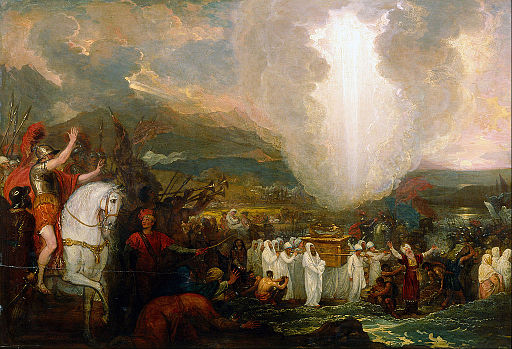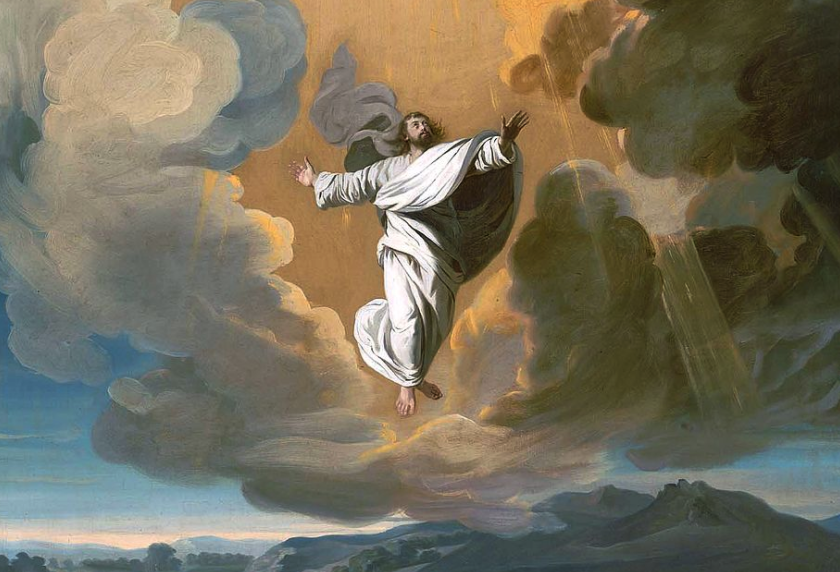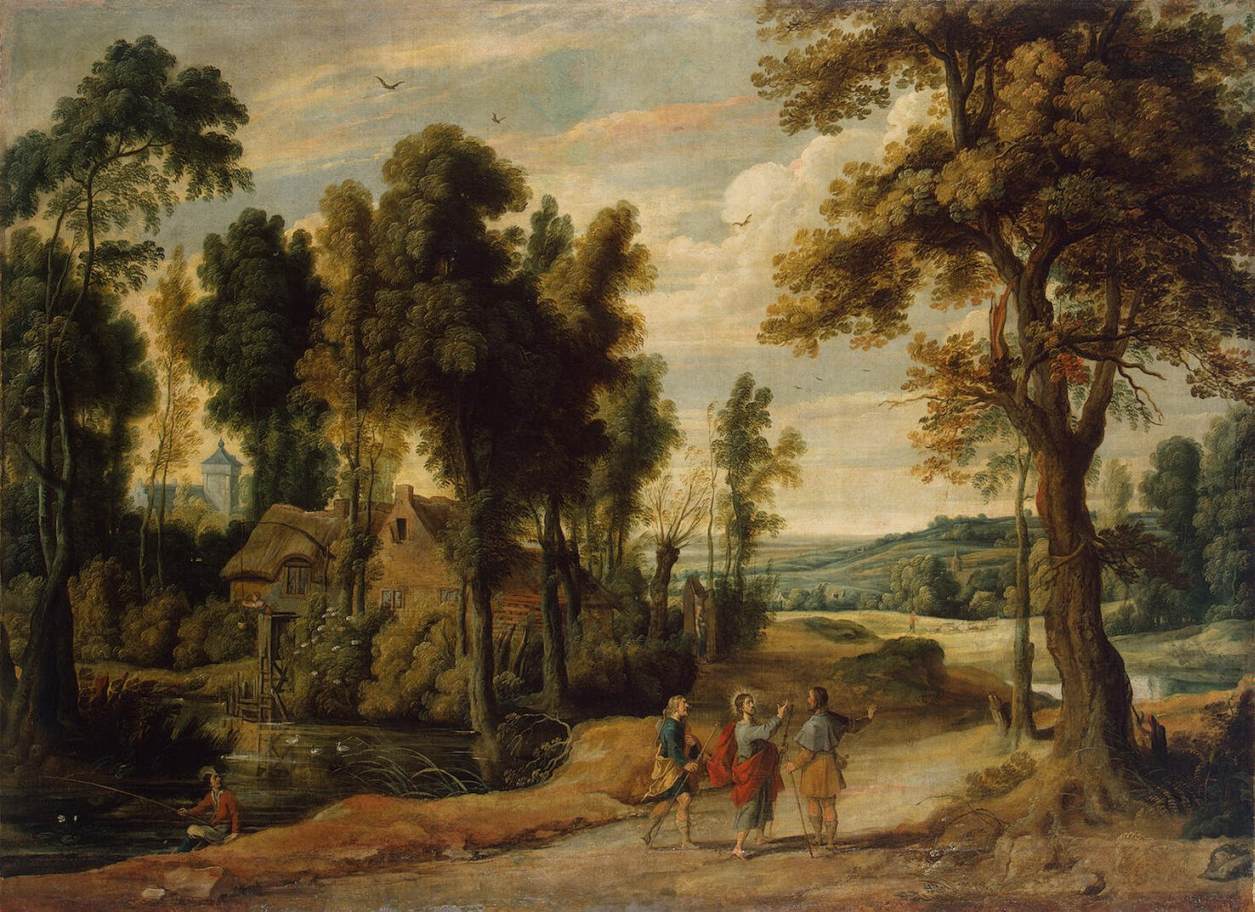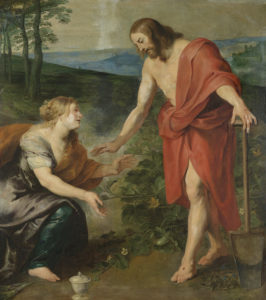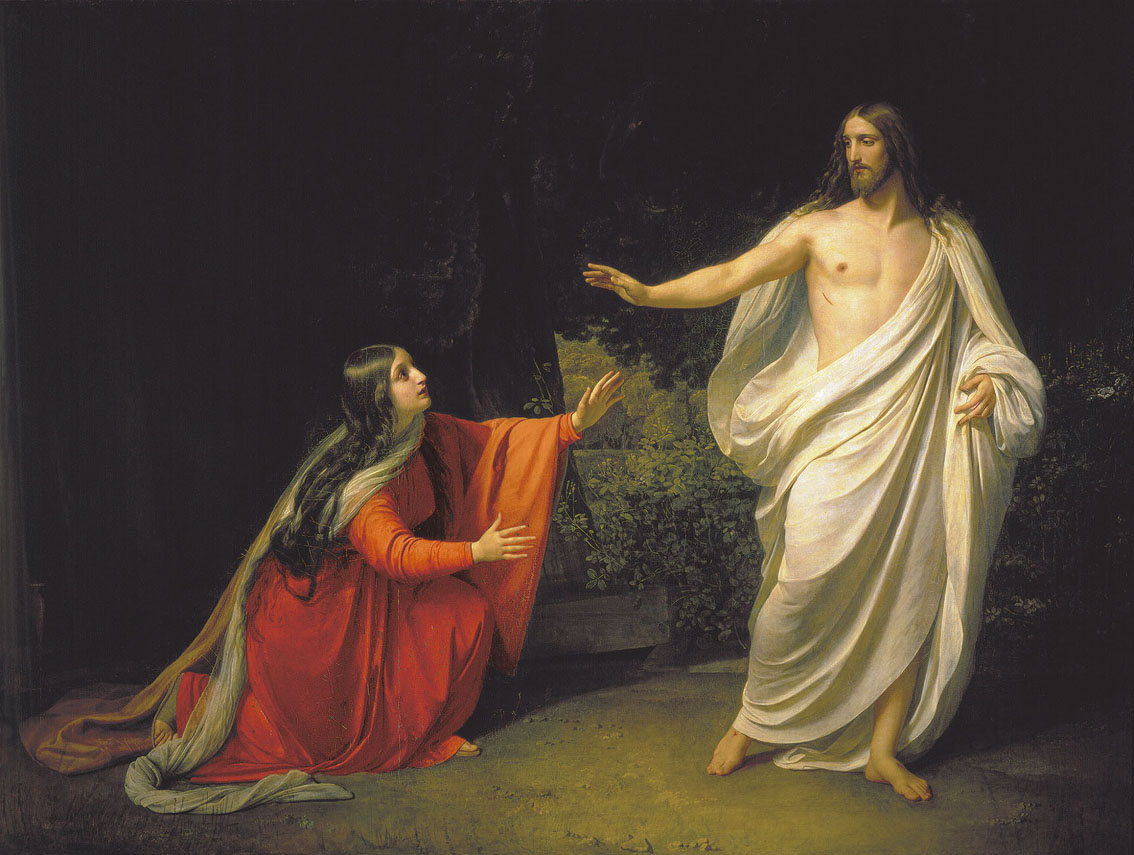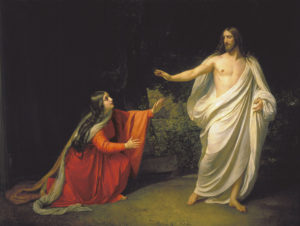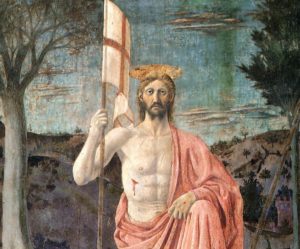 Today’s Gospel is really quite remarkable. For despite the fact that the apostles have seen the resurrected Jesus several times now, they seem to be retreating into the past. They’re headed backwards and Jesus must summon them, if you’ll pardon the expression, “back to the future.”
Today’s Gospel is really quite remarkable. For despite the fact that the apostles have seen the resurrected Jesus several times now, they seem to be retreating into the past. They’re headed backwards and Jesus must summon them, if you’ll pardon the expression, “back to the future.”
They were going back to fishing but the Lord calls them away from fishing and points them to the future, a future that includes going to all the nations and summoning them to saving faith.
This is a critical Gospel that shows us Jesus summoning the apostles back to their crucial call, a call that has its focus not in the past but in the future. Indeed, fellow believers, if this Gospel had not gone right, your faith and mine might well have been in jeopardy. We are the future that Jesus sought to preserve. Our own coming to the faith depended on whether Jesus was able to summon Peter and the other apostles back to the future.
Let’s look at this gospel in four stages.
1. Regrettable Reversal – The text says, At that time, Jesus revealed himself again to his disciples at the Sea of Tiberias. He revealed himself in this way. Together were Simon Peter, Thomas called Didymus, Nathanael from Cana in Galilee, Zebedee’s sons, and two others of his disciples. Simon Peter said to them, “I am going fishing.” They said to him, “We also will come with you.” So they went out and got into the boat, but that night they caught nothing.
Peter had no business going back to fishing. The Lord had clearly called him away from fishing. For example: And he said to them, follow me and I will make you fishers of men. Immediately, they left their nets and followed him (Mat 4:19).
But in today’s Gospel we see Peter going back to commercial fishing. This is not some sort of recreational fishing; the commercial nets are out. It is astonishing to think that after having encountered Jesus risen from the dead on at least two (and possibly more) occasions, he’s going back to fishing!
We often think that if only we were to see a miracle our faith would be strong, but there is very little evidence for this. Many who see signs and wonders, ponder whether what they have seen can be topped. Their fascination is engaged but not their faith. Ultimately, faith produces miracles; miracles do not produce faith.
Peter’s return to fishing is not only regrettable, it is scandalous. For in so doing it leads others say to him, “We will also go with you.” When we backslide we often bring others with us. Looking at it more positively, when we grow in holiness we also bring others with us. Sadly, Peter has regressed and others follow him. But as we shall see, the Lord will not abandon his church.
While we may wonder at St. Peter’s relapse, we should recognize that we, too, easily do the same. We praise Jesus with the same mouth that sometimes spews curses and gossip. We claim that we belong to Christ and are one body with Him, that we are a Temple of the Holy Spirit, and yet with that same body often comes forth fornication and other sexual impurity. We say that God is love, and yet from us too easily comes anger, hatred, and a lack of love for the poor and troubled.
We too easily run back to the things from which we have been called away. The Lord points us forward but we run backward.
Just as He did with the apostles in this Gospel, the Lord must stand on the shore of our baptismal waters, and call us out of the past and back into the future, a future of holiness and perfection. Too easily, we run from this. Yes, the Lord is faithful and stands on the shore calling us back. Would that we could say, in the words of an old gospel song, “Goodbye world, I stay no longer with you, goodbye pleasures of sin, I stayed along with you! I’ve made up my mind to go God’s way the rest of my life!” Another gospel song from the 1940s says, “No more, no more! I’ll never turn back no more! I’m going to keep on crossing till I reach the other shore. Rains may come, floods may roar, storms may race, and winds may blow, but I’ll never turn back, no more!”
Would that this were the case! But the Lord keeps calling us, calling from the shore, out across the waves of our discontent.
2. Redeeming Reminder – The text says, When it was already dawn, Jesus was standing on the shore; but the disciples did not realize that it was Jesus. Jesus said to them, “Children, have you caught anything to eat?” They answered him, “No.” So he said to them, “Cast the net over the right side of the boat and you will find something.” So they cast it, and were not able to pull it in because of the number of fish. So the disciple whom Jesus loved said to Peter, “It is the Lord.” When Simon Peter heard that it was the Lord, he tucked in his garment, for he was lightly clad, and jumped into the sea. The other disciples came in the boat, for they were not far from shore, only about a hundred yards, dragging the net with the fish.
The Lord stands on the shore and does again for them what he had some three years earlier, when he called them from fishing to evangelizing. He does not excoriate them; He does not call them fools or some other epithet. He calls out to them, “Children, have you caught anything to eat?” And rather than rebuke them, He asks them to assess the situation, to consider whether the course of action they have chosen has yielded anything at all. They admit that they’ve caught nothing.
And yet, strangely, this whole incident seems familiar. The Lord tells him that if they cast the net over the other side of the boat they will find something. Suddenly the nets are full! Oh, how this spoke to their hearts; it was just what happened three years ago! Scripture says,
And when he had ceased speaking, he said to Simon, “Put out into the deep and let down your nets for a catch.” And Simon answered, “Master, we toiled all night and took nothing! But at your word I will let down the nets.” And when they had done this, they enclosed a great shoal of fish; and as their nets were breaking, they beckoned to their partners in the other boat to come and help them. And they came and filled both the boats, so that they began to sink. But when Simon Peter saw it, he fell down at Jesus’ knees, saying, “Depart from me, for I am a sinful man, O Lord.” For he was astonished, and all that were with him, at the catch of fish which they had taken; and so also were James and John, sons of Zebedee, who were partners with Simon. And Jesus said to Simon, “Do not be afraid; henceforth you will be catching men.” And when they had brought their boats to land, they left everything and followed him (Luke 5:4ff).
In today’s Gospel, John draws the obvious conclusion, “It is the Lord!” The Lord has given them a redeeming reminder. He does not rebuke them; he only reminds them. In effect, He says “Come out of the past! Remember the future to which I have summoned you, a future of going forth to the nations and announcing the Gospel for all to hear. Your life is not about fish; it is about humanity!”
What reminders has the Lord put into your life? How has He stood on the shore and called to you with some reminder? Perhaps it was a tattered old Bible, or maybe an old hymn that you heard. Perhaps it was your grandmother’s old rosary beads stored away in a dresser drawer. Perhaps you are summoned to a funeral or wedding.
In moments like these, the Lord stands on the shore of life and calls to you. He reminds you of your call, and asks you to consider whether your present course is doing anything for you whatsoever. Usually, it has not. Perhaps there is fleeting wealth or momentary popularity, but otherwise there is little else to show for it.
And thus the Lord calls. He calls us back to the future, a future (and a present) oriented toward Heaven. Since you have been raised to new life with Christ, seek the things that are above, rather than the earth below (Colossians 3:1).
In the words of a popular hymn, “Softly and tenderly Jesus is calling, calling for you and for me. See on the portals he’s waiting and watching, watching for you and for me; Come home, come home! Ye who are weary come home! Earnestly, tenderly, Jesus is calling, calling oh sinner come home!”
Here, then, is a redeeming reminder that Jesus is calling, softly and tenderly: “Come out of the past. Come away from commercial fishing. Look to the future, the future of saving souls!”
III. Reorienting Repast – The text says, When they climbed out on shore, they saw a charcoal fire with fish on it and bread. Jesus said to them, “Bring some of the fish you just caught.” So Simon Peter went over and dragged the net ashore full of one hundred fifty-three large fish. Even though there were so many, the net was not torn. Jesus said to them, “Come, have breakfast.” And none of the disciples dared to ask him, “Who are you?” because they realized it was the Lord. Jesus came over and took the bread and gave it to them, and in like manner the fish. This was now the third time Jesus was revealed to his disciples after being raised from the dead. When they had finished breakfast, Jesus said to Simon Peter, “Simon, son of John, do you love me more than these?” Simon Peter answered him, “Yes, Lord, you know that I love you.” Jesus said to him, “Feed my lambs.” He then said to Simon Peter a second time, “Simon, son of John, do you love me?” Simon Peter answered him, “Yes, Lord, you know that I love you.” Jesus said to him, “Tend my sheep.” Jesus said to him the third time, “Simon, son of John, do you love me?” Peter was distressed that Jesus had said to him a third time, “Do you love me?” and he said to him, “Lord, you know everything; you know that I love you.” Jesus said to him, “Feed my sheep.”
Notice three basic elements whereby the Lord uses a meal to reorient them. To reorient (re (again) + oriens (East)) literally means to turn someone back to the East, back toward the rising of the sun (Son), back toward the light and away from the darkness.
FISH – The fish are in, and their number is plentiful. The specific number, 153, has significance more for humanity than for fish. While much ink has been spilled on the significance of this number, the most likely explanation seems to be that this was the number of known nations at the time. And hence, that exactly 153 fish are caught seems to be the Lord’s way of saying, “…not fish, but humanity: all the nations!” We see that God can use even our backsliding, our sins, and use them to call us away from them. Yes, He can use our sins to be a teachable moment.
FIRE – As Peter comes ashore, he sees a fire. And though the text is silent on this, surely it must have unnerved him! For here was a charcoal fire, the same sort of fire that was in the courtyard of Caiaphas the high priest where Peter had denied the Lord (Jn 18:18). Hurt, and unnerved by what he had done—or rather failed to do—Peter felt unworthy. Yes, this fire reminded him of his denial of the Lord.
And yet even Peter’s repentance is somewhat egocentric. It would seem that he wonders, “How could I have done this, I, who promised the Lord to be with Him even if all should rage against Him!” But in moment of cowardice, Peter denied the Lord. Oh yes, this fire, this charcoal fire, is bothersome indeed! The Lord stands next to the fire and looks at Peter much as he had in the courtyard of Caiaphas when, after Peter had denied Him for the third time, Jesus turned and looked at Peter (Lk 22:61). How this fire bothered him!
FRANKNESS – But now comes a tender, poignant, and powerful conversation. To us who read the text in English, the conversation focuses on the fact that three times, the Lord asked Peter, “Do you love me?” But in Greek, there are subtleties that do not come through in the English translation.
In the English translation, the Lord asks Peter simply, “Do you love me?” And Peter answers, “Yes Lord, I love you.” The Greek text, however, is more subtle and more specific. In Greek, the Lord asks, Σίμων Ἰωάννου, ἀγαπᾷς με πλέον τούτων? (Simon Joannou agapas me pleon touton? – Simon, son of John, do you love (agapas) me more than these?). Jesus has asked about “agape” love. But Peter replies, κύριε, σὺ οἶδας ὅτι φιλῶ σε. (Kyrie, su oidas oti philo se. – Lord, you know that I have brotherly (philo) love for you.)
The Lord asked for agape love, the highest love, wherein we love God above all things and above all people, including ourselves. But Peter does not answer with agape love. Rather he replies that he loves the Lord in a brotherly (philo) way. This is far short of what the Lord asked. (I realize that there are debates about the Greek used in this passage, but I am convinced that the use of the two different verbs is significant. You can read more on this topic here: Agape vs Philo in John 21).
But in spite of Peter’s response of imperfect love, the Lord still has something important for St. Peter to do: Feed my lambs.
A second time, the same dialogue sets up wherein the Lord asks Peter, Σίμων Ἰωάννου, ἀγαπᾷς με (Simon, son of John, do you love (agapas) me? Peter responds, κύριε, σὺ οἶδας ὅτι φιλῶ σε (Lord you know that I have brotherly (philo) love for you. Again, the Lord has asked for unconditional, ultimate love. But Peter can only return a lesser love, a brotherly love, a sort of affection. Yet again, the Lord does not reject Peter. He accepts what Peter says and tells him, Tend my sheep.
On the third occasion, Jesus accepts what Peter is able to offer and asks him, Σίμων Ἰωάννου, φιλεῖς με; (Simon, son of John, do you have brotherly affection (phileis) for me? The third question, which strikes Peter to the heart, causes him to exclaim that he (only) has brotherly love. Yet again, the Lord does not reject Peter, but rather assigns him a task, saying once again, Feed my lambs.
This is perhaps one of the most poignant, beautiful, and honest moments in Scripture. The Lord looks with love to a disciple and asks him for the highest love; that disciple honestly answers that he has only imperfect love to offer. Perhaps for the first time in his life, Peter is being absolutely honest. There is no more posing, no more bragging—only an honest answer, borne out of sober appreciation of his human lapses. There is nothing more beautiful than honest prayer, for honesty is a prelude to healing. Jesus accepts what Peter is able to offer, and as we shall see, promises him that his heart will expand so that one day he will love the Lord totally, unconditionally, above all things, and above all people.
How about you? Are you honest with the Lord? Have you experienced His love in spite of your sin? Do you know that He can use you even in your weakness if you are willing to be honest with Him?
IV–Required Remedy – The text says, “Amen, amen, I say to you, when you were younger, you used to dress yourself and go where you wanted; but when you grow old, you will stretch out your hands, and someone else will dress you and lead you where you do not want to go.” He said this signifying by what kind of death he would glorify God. And when he had said this, he said to him, “Follow me.”
In this whole conversation, the Lord’s purpose is not to stalk Peter or to badger him. Rather, it is to lead him toward a necessary remedy, to point him back toward the future, a future filled with evangelical fervor and sacrificial love. Peter is weak now, but the Lord will give him strength. Within ten days after His Ascension, the Holy Spirit will come and Peter will be quickened, strengthened in the faith.
But even then, the work the Lord needs to do is not finished, for the Lord speaks of the day when Peter will finally have the grace to accept martyrdom. It will be a day when someone will tie him fast and lead him off to where he would rather not go. But Peter will go. And he will die for Christ.
In the end, Peter will be able to say, without any simulation or exaggeration, “I love you, Lord, totally, with agape love. I love you above all things, above all people, and above even my own life.”
For now, though, Peter is not ready. But the Lord will lead him by stages and get him ready.
How will Peter get there? How will we get there? The Lord simply says, Follow me.
So, fellow disciples, the Lord is leading you to a deeper love, an unconditional love, a love above all other loves. Only the Lord can do this. He did it for Peter—a hard case, actually—and He can do it for you!
For now, though, He is standing on the shore and calling us to a richer future:
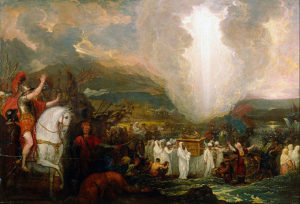 Lest the Easter Season slip away and I miss the chance, I would like to look back on a reading from the Easter Vigil.
Lest the Easter Season slip away and I miss the chance, I would like to look back on a reading from the Easter Vigil.
